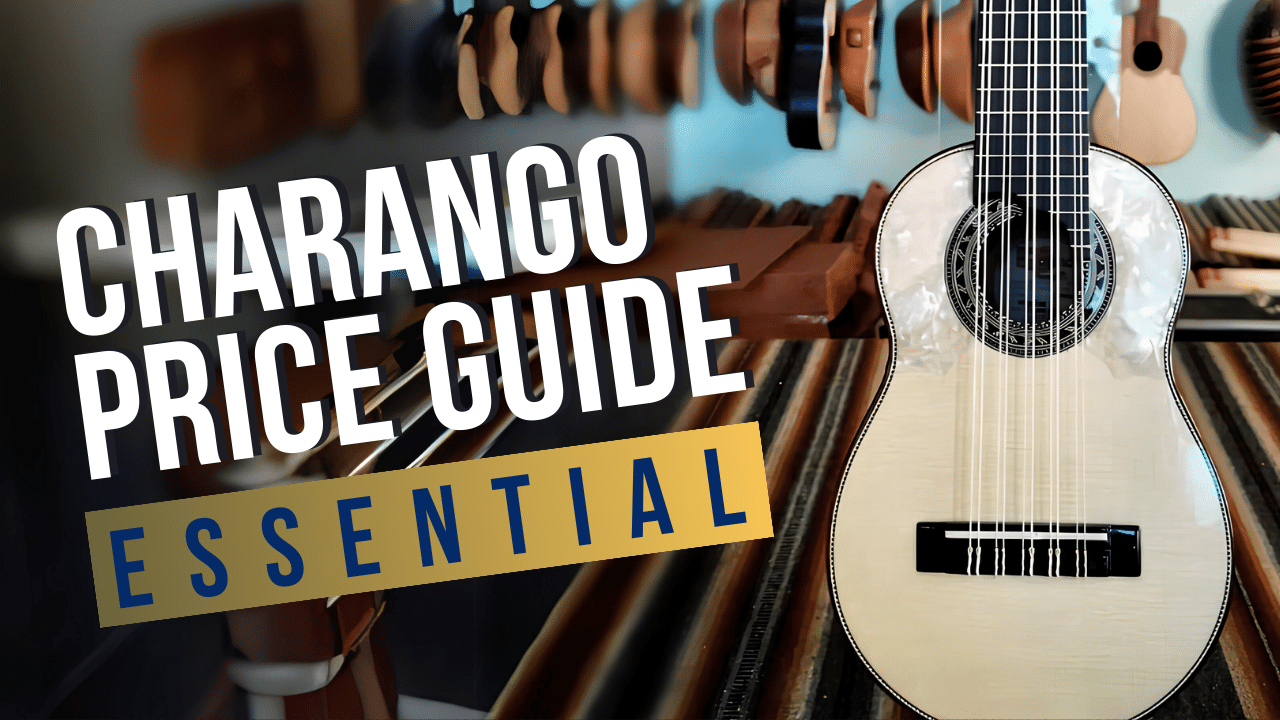
Essential Guide to Charango Pricing

The price of a charango depends on a number of factors, which relate first and foremost to the type of instrument, but also to the materials from which it is made, the luthier who makes it, and the place of manufacture. Knowing the differences that impact the final cost of a charango is very important when you are looking for a particular instrument. If you are traveling in South America and want to buy a quality instrument, this is important in order to avoid running into scams.
To better understand the price ranges, you need to familiarize yourself with three macrocategories into which charangos made by luthiers are divided: studio instruments; semiprofessional instruments; and concert instruments. In Bolivia, you can also easily find cheaper instruments, which are usually found in the market areas of the main cities: unfortunately, they are little more than souvenir articles for tourists and they present various problems, starting with durability and intonation. Our advice is to always go to reputable and highly recognized luthiers, who are the only ones who can guarantee an instrument that will withstand atmospheric changes and offer high technical characteristics.
BOLIVIA
Bolivia is the major center of charangos production. Making a rough estimate, it can be said that at least 80 percent of the charangos produced worldwide come from Bolivia! Also being a country with a developing economy, it still maintains relatively affordable prices when compared to other South American states. The reason for this fervent production is that lower quality instruments are often sold to other countries, destined to be distributed in markets and stores in various Peruvian, Argentine or Chilean cities. Sometimes they are even passed off as fruits of local production, but are sold at a clearly higher price.
In Bolivia, studio instruments cost between $120 and $380. Semi-professional instruments cost between $400 and $630. For concert instruments, on the other hand, one can expect to pay between $600 and $1,300.
ARGENTINA
Argentina has established itself as a major producer of charangos due to the great success of one particular instrument, the Argentine ronroco. Currently, especially in Buenos Aires and the northern provinces (Salta, Jujuy) there are several luthiers producing a wide range of instruments. The best known and sold, especially abroad, is precisely the ronroco. However, there is now a particular aesthetic for the instrument that departs from the classical Bolivian charango and tends to seek more modern forms and less traditional decoration. The studio instruments found in Argentina are actually often made in Bolivia and resold at a premium cost: as a result, they are not very worth the price compared to others. They range in cost from $200 to $350. Semi-professional instruments cost between $500 and $700 while for concert instruments, they go up to $1,800 to $2,000.
PERÙ
Of all the countries, after Bolivia, Peru has the largest market for instruments. Although most of these are not actually produced here, but in Bolivia, there are some highly esteemed luthiers and, above all, there is a splendid variant of the charango, the Peruvian charango. In Peru, prices are higher and, especially for mid-range to low-end instruments, they are not very affordable. Here, study instruments cost between 150 and 400 dollars. Semi-professional instruments cost between 400 and 600 dollars, while for concert instruments, one has to pay between 700 and 1000 dollars.
CHILE
Chile, like Argentina, is one of the countries in which the spread of the charango has created a very strong culture and in which the aesthetic taste has developed its own variant. Chilean Andean music has also taken on such peculiar forms over the years that it has defined a true ‘Chilean sound’ on the charango. The instruments have adapted to this taste.
In Chile studio instruments are almost always of Bolivian origin and cost between $150 and $350. Semi-professional instruments cost between $400 and $800, while concert instruments cost up to $1,200.
HOW MUCH DOES A CHARANGO COST IN USA OR EUROPE?
If you are in the United States or Europe, buying a charango from Bolivia to South America has the disadvantage that you have to include shipping and import costs, which greatly increase the final cost of the instrument. In fact, shipping a standard charango with a case can cost between $90 and $250, depending on the place of origin and the courier, and customs duties must be added to this. All this discourages the purchase of cheap instruments, because sometimes the total cost of shipping can even exceed the value of the instrument itself! Furthermore, shipment times can range from 15 days to two months, depending on the forwarding agent or possible problems and mishaps, and there is always the risk of the instrument arriving damaged as a result of impacts, customs checks or other incidents (unfortunately I speak from experience).
Actually, there is an alternative to buy a new charango, ronroco or accessories, safely, quickly and at unbeatable prices: these are the instruments on sale on the Charango.it shop. These are instruments personally selected from the workshops of the best and most reliable Bolivian luthiers. In addition to being carefully chosen to guarantee the highest quality, these instruments have an advantage: they are already in Italy, so costs and shipping times are negligible. Take a look: there are always new instruments on the way.
